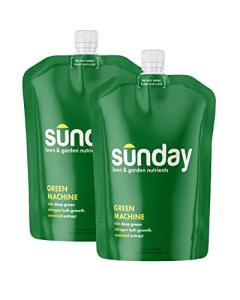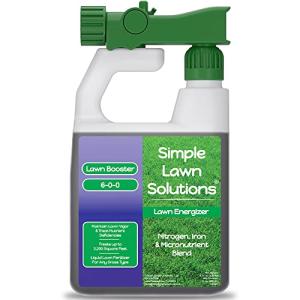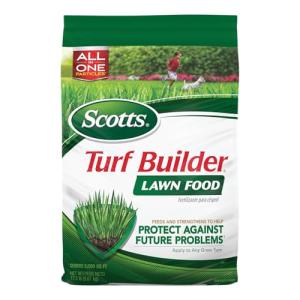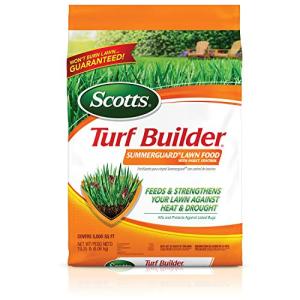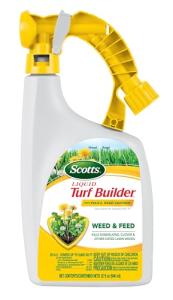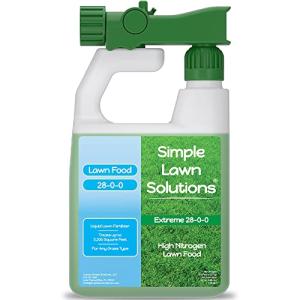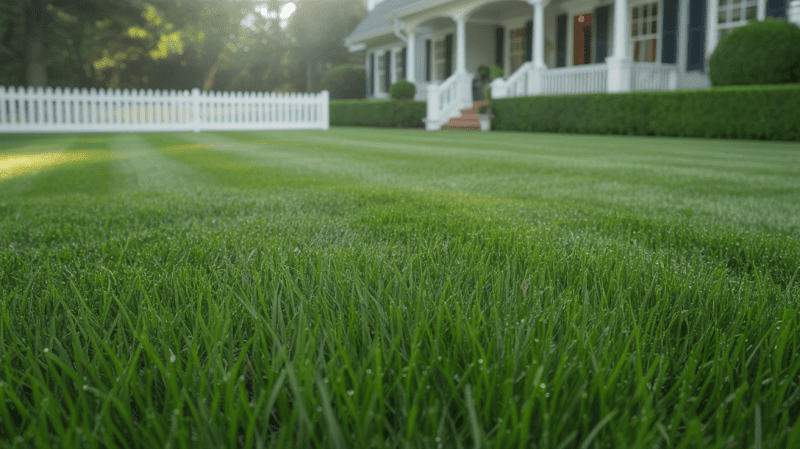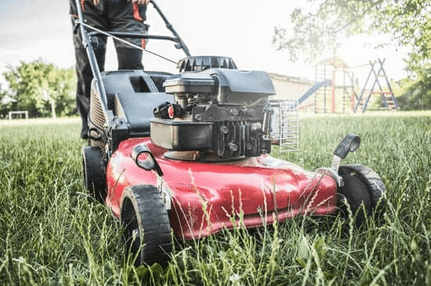Choosing the Right Lawn Care for a Healthy Spring Garden:

Understanding Organic and Chemical Lawn Care
Lawn care isn’t just about mowing; it's about choosing products and methods that keep grass looking good. The big decision? Natural versus synthetic fertilizers and treatments.
Each one has its pros and cons for your yard and the environment.
What Is Organic Lawn Care?
Organic lawn care uses natural sources like compost, manure, and plant-based fertilizers. The primary goal is to cultivate healthy soil by promoting the growth of beneficial microbes and earthworms.
These microbes break down organic matter and release nutrients slowly, so the grass gets fed over time. Organic fertilizers don’t give instant results, but they help the soil and lawn in the long run.
You avoid hurting beneficial insects or polluting water sources by skipping harsh chemicals. This is probably your lane if you’re after an eco-friendly approach and don’t mind waiting.
Defining Chemical Lawn Care
Chemical lawn care uses synthetic fertilizers and pesticides. These products contain concentrated nutrients that grass can absorb immediately.
If you want a quick green-up, chemicals are the way to go. But overdoing it can harm soil microbes, bugs, and even nearby creeks or ponds.
They’re convenient and work fast, but you must pay attention to how you use them. People who choose this route typically want speedy results and less hassle, but they should also be mindful of the environmental side effects.
Key Differences Between Organic and Chemical Approaches
Getting a feel for these core differences helps you match your lawn care to your goals and pace. To explore organic options further, check out this list of organic fertilizers for your lawn.
Fundamental Aspects of Spring Lawn Fertilization
Spring fertilization isn’t just about throwing down whatever’s on sale. You need to know your soil, pick the right fertilizer, and get the timing and amount right.
That’s how you get healthy growth and avoid wasting money or damaging your lawn.
Soil Testing and Lawn Analysis
Always start with a soil test. It tells you pH and nutrient levels, which helps you pick the best fertilizer.
Knowing whether your soil is acidic, neutral, or alkaline is crucial for effective nutrient absorption. The test also shows how much nitrogen, phosphorus, and potassium you’ve got to work with.
This eliminates a lot of guesswork and helps you fix what’s missing. Try to test a few weeks before spring fertilization so you have time to plan.
Local extension services usually offer affordable or even free tests. It’s a simple way to avoid overdoing it with nutrients.
Choosing the Best Fertilizer for Spring
Select your fertilizer based on soil test results and your specific type of grass. Organic fertilizers feed the soil slowly, helping it thrive, and reducing the risk of burning your grass.
Chemical fertilizers work fast but can burn or wash away if you’re not careful. Your grass type, climate, and lawn condition affect the decision.
Nitrogen is usually the big one in spring; it sparks new growth. Always check the label for nutrient ratios and instructions.
You want a mix that fits your soil’s needs. For more information, here’s a guide to choosing fertilizer and another spring fertilizer resource.
Proper Timing and Application Rates
Timing matters. The best time to fertilize is when grass starts growing usually after the last frost.
If you fertilize too early, you risk wasting nutrients or stressing the grass. Applying too much can burn your lawn or cause runoff, while too little leaves the grass hungry.
Follow the label, measure your yard, and use a spreader to get even coverage. Don’t overlap or you’ll get stripes.
Regular soil tests help you determine the right amount each year so you don’t overdo it or come up short.
Comparing Organic and Chemical Fertilizers
All fertilizers give your lawn nutrients, but they don’t all work the same way. Some release nutrients slowly over time, while others act almost instantly.
They also have different effects on soil health and the critters living in it.
Key Nutrients: Nitrogen, Phosphorus, and Potassium
Nitrogen, phosphorus, and potassium are the big three. Nitrogen makes grass green and lush. Phosphorus enhances root growth, while potassium helps plants resist disease and drought.
Organic fertilizers usually release these nutrients slowly, so you don’t get quick results, but you avoid burning your grass. Chemical fertilizers, or synthetics, act fast and can green up your lawn almost overnight.
Both types come in specialty blends tailored to unique needs, such as high nitrogen for a quick green or more potassium for dry climates.
Sunday Green Machine Lawn Fertilizer, 2 Pack
Give your lawn a boost with this easy-to-use, all-natural fertilizer that promotes lush, green growth
Product information
$48.00
$39.99
Product Review Score
4.12 out of 5 stars
99 reviews
Product links
Sunday Green Machine Lawn Fertilizer, 2 Pack
Give your lawn a boost with this easy-to-use, all-natural fertilizer that promotes lush, green growth
Product information
$48.00 $39.99
Product Review Score
4.12 out of 5 stars
99 reviewsProduct links
Types of Organic Fertilizers
Organic fertilizers include materials such as manure, compost, and compost tea. These feed the good bacteria and bugs in your soil, making it healthier.
Manure and compost add organic matter, which helps the soil hold onto water and nutrients. Compost tea delivers nutrients in a form that’s easily usable by plants.
They’re bulkier and act more slowly, but they build long-term soil health. Since they have less nutrient punch per pound, you’ll probably need to use more of them.
Liquid Lawn Fertilizer with Iron for Greener Grass
Get lush green grass quickly and easily with our liquid fertilizer packed with essential nutrients
Product information
$24.77
Product Review Score
4.97 out of 5 stars
89 reviews
Product links
Liquid Lawn Fertilizer with Iron for Greener Grass
Get lush green grass quickly and easily with our liquid fertilizer packed with essential nutrients
Product information
$24.77
Product Review Score
4.97 out of 5 stars
89 reviewsProduct links
Types of Chemical Fertilizers
Chemical fertilizers are available in granular or liquid forms. Granular types can be quick-release or slow-release. Quick-release works quickly but can wash away easily, while slow-release lasts longer.
Synthetics are typically less expensive and easier to store. They allow you to target exact nutrient needs, but overdoing it can damage soil life.
Most chemical fertilizers focus on delivering concentrated nitrogen, phosphorus, and potassium, making them super effective for rapid greening.
Effects on Soil Structure and Microorganisms
Organic fertilizers add organic matter to the soil, allowing air and water to move more freely. They also encourage helpful bacteria and other microorganisms that break down nutrients into forms that plants can use.
This increase in microbial activity gradually improves soil quality over time. Chemical fertilizers, on the other hand, don't support soil life in quite the same way.
They give nutrients directly to plants, but if you use them too much, you can reduce the population of beneficial microorganisms. This can eventually compromise soil structure and increase the likelihood of compaction.
Organic fertilizers are the best way to build a healthier soil ecosystem. Chemical fertilizers focus on achieving fast results, but often overlook improving soil quality. For more details, see Oregon State University’s guide.
Best Practices for Spring Lawn Maintenance
Spring lawn care is all about getting grass to grow strong and lush. It also means improving soil health and managing pests without harming the environment.
Good practices balance nutrient supply, soil prep, and weed control. The goal? A green, healthy lawn that lasts. If you want to dig deeper, take a look at these tips.
Fertilizing Cool-Season and Warm-Season Grasses
Cool-season grasses, like Kentucky bluegrass, really take off in early spring. At that time, they loved a slow-release nitrogen fertilizer, which helped their roots get strong before summer rolls in.
Warm-season grasses, such as Bermuda or Zoysia, do not germinate until soil temperatures reach 55°F. That's when they need their fertilizer boost.
Using a spreader helps you apply fertilizer evenly, so you don't end up with uneven patches or burned spots. Organic fertilizers release nutrients slowly and help the soil, unlike chemical ones that can wash away and cause problems.
They also feed the microbes that make nutrients available to plants. Try to avoid fertilizing before a big rain, though, or you'll lose nutrients to runoff and pollute local streams.
Getting the timing and amount right really does make a difference. It helps your lawn grow better and keeps nearby water cleaner.
Aeration, Topdressing, and Soil Health
Aeration means pulling out small plugs of soil to let air, water, and nutrients reach the roots. Lawns with a lot of foot traffic or hard, compacted soil benefit from this.
It helps cool-season grasses recover from winter and prepares warm-season grasses for growth. After aerating, you can topdress by spreading a thin layer of compost or sandy soil over the lawn.
This adds organic matter and helps the lawn retain moisture during dry periods. Topdressing also makes the surface smoother and prevents thatch from building up too much.
When you focus on soil health, your lawn is better equipped to handle drought and retain water longer. Healthier soil allows for deeper root growth, reducing the need for chemicals, which is beneficial for pollinators and the broader environment.
Managing Weeds, Pests, and Environmental Impacts
Weed control kicks off when you prevent weed seed germination by tossing pre-emergent herbicides early in the spring. For weeds that have already emerged, you can use selective herbicides to target broadleaf species without harming your grass.
Organic weed killers and pest control options are available if you're concerned about the use of chemicals. They usually rely on natural ingredients that break down fast, so you don't pollute your yard or the neighborhood creek.
People must use pesticides and herbicides carefully, as chemical runoff can damage local ecosystems and water supplies. Integrated pest management is a smarter approach: monitor pests and only treat when necessary.
Fertilizing and aerating your grass goes a long way toward keeping it healthy and thick. It naturally crowds out weeds and makes your lawn tougher against pests, so you won't rely on chemicals as much.
DISCLAIMER
This document is provided for general information purposes only and should not be relied upon as providing legal advice, technical, or specific operational guidance to the reader, whether as to the practices described in the document or the applicable legal requirements and regulations. Lawnfly.com expressly disclaims any responsibility for liability arising from or related to the use or misuse of any information in this document.


